Are you struggling to maintain a healthy, lush lawn? Have you considered aerating your lawn but are unsure of the best method to use? The battle of liquid aeration vs. core aeration is not one to be taken lightly.
Liquid aeration offers deeper penetration, while core aeration provides immediate changes but may be less effective for compacted soils.
Both methods have their advantages and disadvantages, and choosing the right one for your lawn is essential for achieving maximum results.
What we cover
ToggleUnderstanding Lawn Aeration
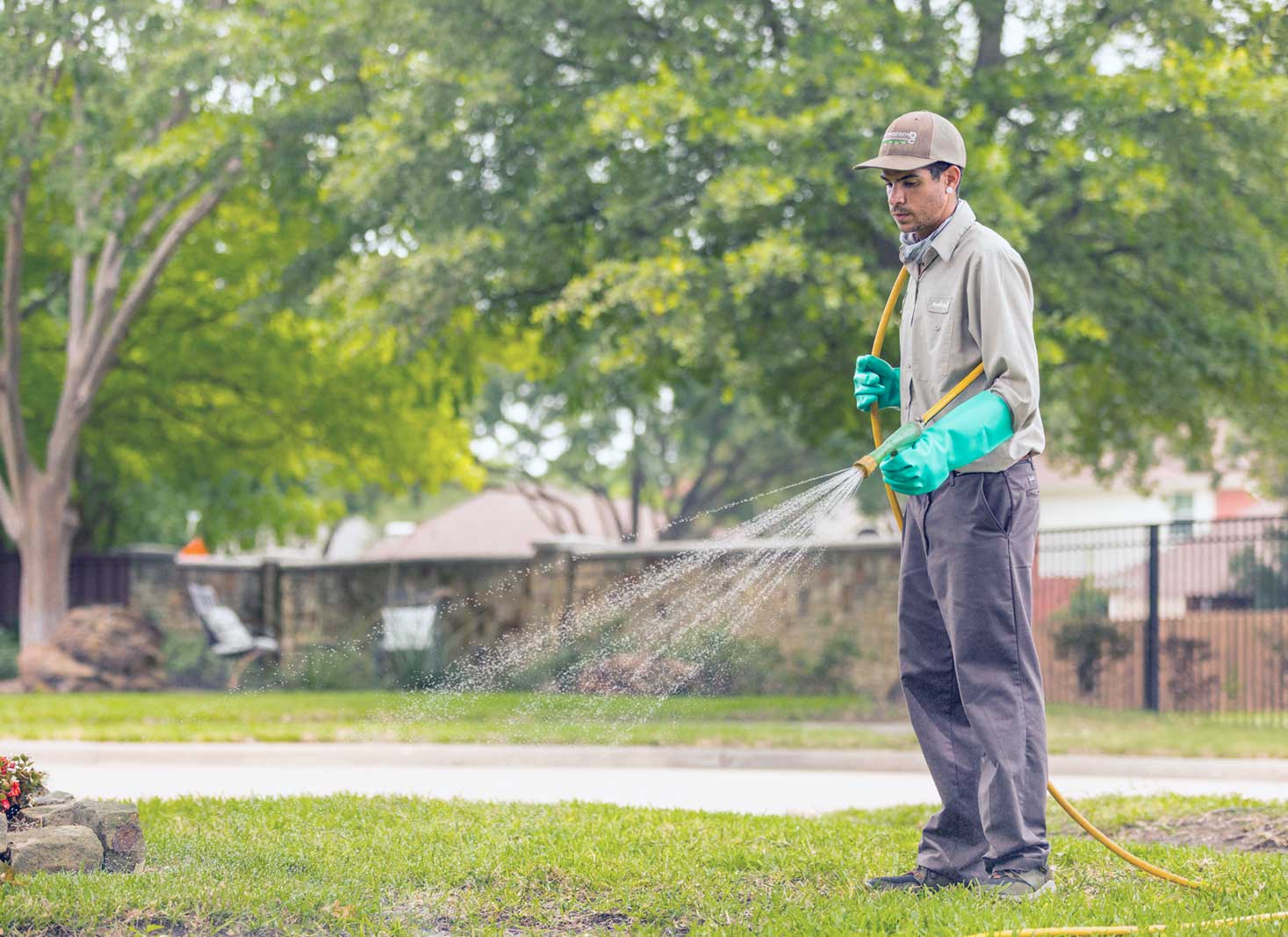
Lawn aeration is crucial for maintaining a healthy and vibrant lawn, as it allows oxygen, water, and nutrients to penetrate deeper into the ground, promoting the development of a rich and fertile topsoil or humus.
Aeration is a process that helps break up compacted soil, allowing your lawn to breathe and thrive.
The two primary types of lawn aeration are liquid aeration and core aeration, each with its own set of advantages and disadvantages.
Soil compaction occurs when soil particles become too dense, making it difficult for essential nutrients and other elements to penetrate, which can be caused by thatch or physical activity.
The Causes of Soil Compaction
Soil compaction is a phenomenon where soil particles become overly dense, hindering the penetration of vital nutrients and other elements.
Several factors can contribute to soil compaction, including heavy machinery, foot traffic, livestock trampling, and even weather conditions such as rain and drought.
When soil becomes compacted, it can negatively impact the growth of your lawn.
Thatch, which is the layer of decomposing organic material between the soil and grass, creates a barrier that restricts moisture, nutrient provision, and air circulation, essentially depriving your grass of essential elements.
Identifying Signs of Compacted Soil
Recognizing the signs of compacted soil is the first step towards addressing the issue and rejuvenating your lawn.
Some indications of compacted soil include inadequate drainage, sparse or spotty grass, shallow roots, exposed soil patches, and the occurrence of weeds that are tolerant to low oxygen levels.
If you notice any of these signs on your lawn, it’s time to take action and aerate your lawn. By addressing soil compaction, you’ll be able to promote a healthier lawn and create a more enjoyable outdoor space for you and your family.
Liquid Aeration: An Overview
Liquid aeration is an innovative method that uses specially formulated liquids to soften the soil and promote the long-term growth of a healthy soil ecosystem without leaving unsightly soil plugs on your lawn.
This method has gained popularity in recent years due to its ability to break up soil and reduce compaction in an unobtrusive and eco-friendly manner.
How Liquid Aeration Works
Liquid aeration is accomplished by combining a liquid aeration product with water and dispersing it across your yard using a garden pump sprayer.
This solution increases the oxygen levels in the soil, making it more porous and fertile, allowing essential nutrients, water, and air to penetrate deeper into the ground.
The liquid solution permeates the turf and eventually seeps into the ground, decomposing compacted matter and loosening the soil.
This process helps create pathways for essential nutrients to reach the root systems of grass, trees, shrubs, and other vegetation, resulting in a more fertile soil and a healthier lawn at a considerably lower cost, energy, and effort.
Advantages of Liquid Aeration
One of the main advantages of liquid aeration is its ability to penetrate deeper into the soil than core aeration, as well as its long-lasting cumulative effect.
Deeper penetration facilitates better drainage and moisture retention, prevents the accumulation of standing water, and enhances the efficacy of fertilizer.
Liquid aeration is also a faster and more effortless method for aerating your lawn, as it can be accomplished without the need for heavy machinery.
This makes it an ideal choice for homeowners who want a quick and efficient solution to improve their soil structure and promote healthier grass growth.
Core Aeration: An Overview
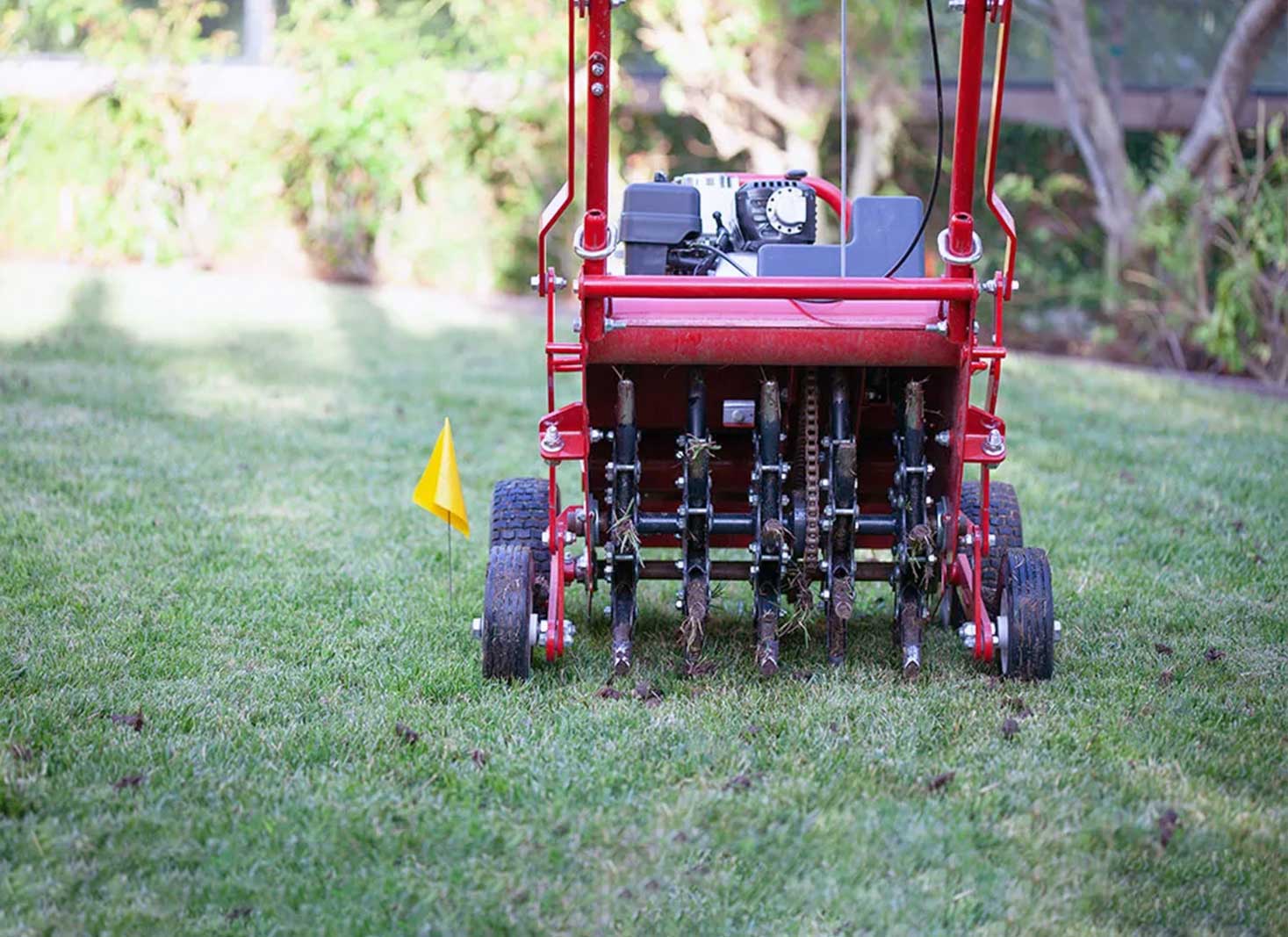
Core aeration, on the other hand, is a more traditional method that involves using a tool to extract plugs of soil from your lawn, disrupting compacted soil and allowing essential nutrients to return to the Earth.
This method creates pockets in the soil for nutrients, water, and sunlight to reach the ground, promoting a healthier lawn.
How Core Aeration Works
Core aeration involves the use of either a powered or manual machine to create holes in your lawn by extracting small plugs from the ground at regular intervals.
This process breaks up compacted soil, allowing essential nutrients, water, and air to penetrate deeper into the ground and nourish your grass.
After the aeration process, it’s recommended to leave the soil cores on the lawn, as they will disintegrate over time and return nutrients to the soil.
This method helps promote a healthier lawn and a more vibrant outdoor space for you and your family to enjoy.
Advantages of Core Aeration
Core aeration offers numerous advantages, such as alleviating soil compaction, decreasing thatch accumulation, augmenting air and water circulation in the soil, and augmenting nutrient uptake and utilization.
This method is particularly effective for lawns that have a significant amount of thatch build-up or are very compacted, where liquid aeration may not be as effective.
The plugs created during core aeration also help to facilitate the access of nutrients, water, and sunlight to the soil, further contributing to the overall health of your lawn.
Although this process may leave unsightly plugs on your lawn initially, these will break down over time and provide additional benefits to your soil structure.
Comparing Liquid and Core Aeration
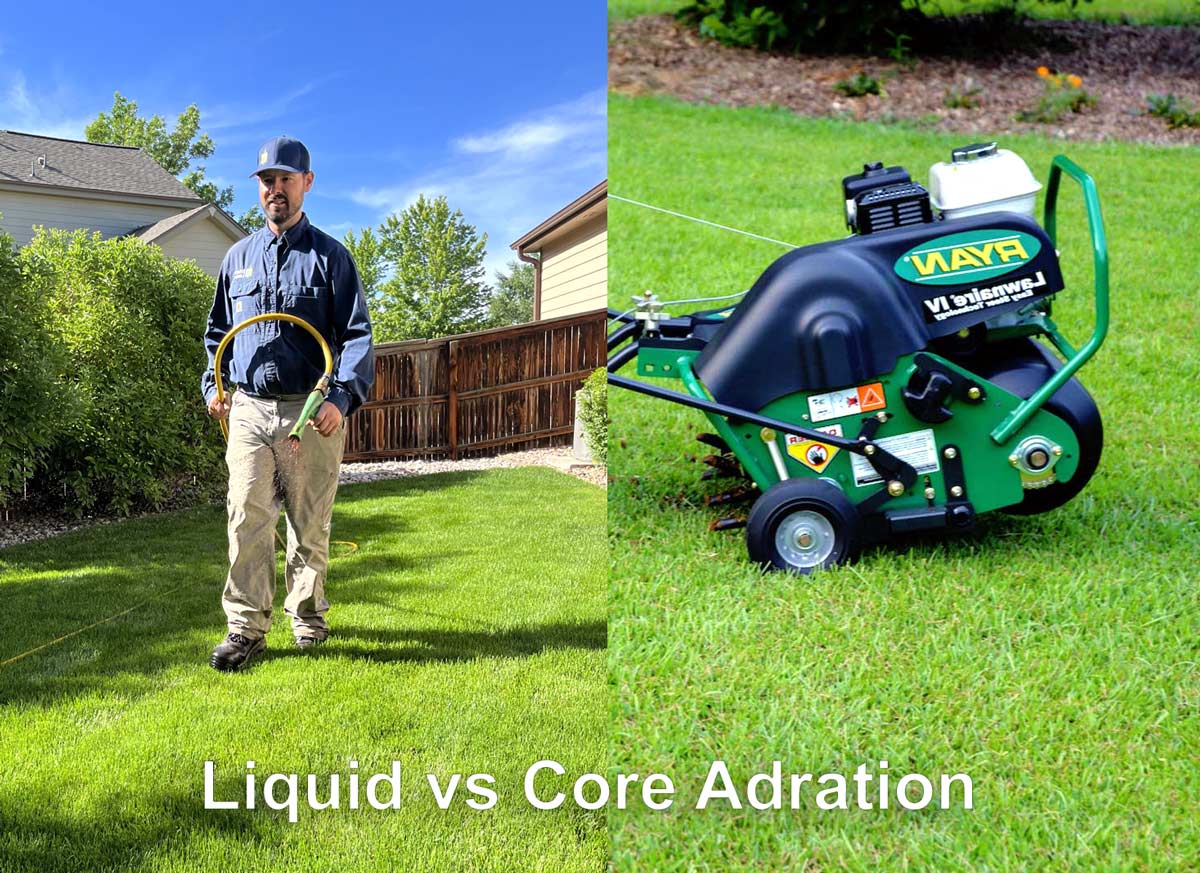
Core aeration is eco-friendly and provides immediate benefits, but its effects can be short-lived and the process can be physically intensive with the risk of damaging underground sprinkler systems.
On the other hand, liquid aeration penetrates deeper into the soil than core aeration and has a long-lasting cumulative effect, but it takes more time to be effective and cannot be used on newly seeded lawns or very compacted yards.
Effectiveness
Liquid aeration has the ability to penetrate deeper into the soil and enhance soil biodiversity, which promotes a healthier lawn in the long run.
However, the results may take longer to be visible, as it is a slow process that can take many months or even years to potentially yield noticeable improvements.
Core aeration, on the other hand, provides immediate benefits by breaking up compacted soil and creating pockets for nutrients and water to reach the roots of your grass.
While this method is more expeditious than liquid aeration, it may leave behind unsightly soil plugs and is not as effective for compacted soil.
Time and Effort
When comparing the time and effort required for each method, liquid aeration requires a longer period of time to observe results, while core aeration is more expeditious.
Additionally, liquid aeration requires more time and effort to achieve desired results in terms of softening the ground.
Core aeration, on the other hand, can be labor-intensive and may pose a potential risk to subterranean sprinkler systems if not performed with care.
However, both methods provide benefits to your lawn and can be combined for maximum results, as discussed in the following section.
| Effectiveness | Time | Effort | |
|---|---|---|---|
| Liquid Aeration | 1. Can penetrate deeper into the soil 2. Can enhance soil biodiversity | 1. Requires more time in achieving desired results | 1. Involves a slow process in order to yield improvements over the years |
| Core Aeration | 1. Provides immediate benefits 2. Creates pockets for nutrients and water to reach roots | 1. Is more on labor-intensive | 1. Is more expeditious than liquid aeration |
Choosing the Right Aeration Method for Your Lawn
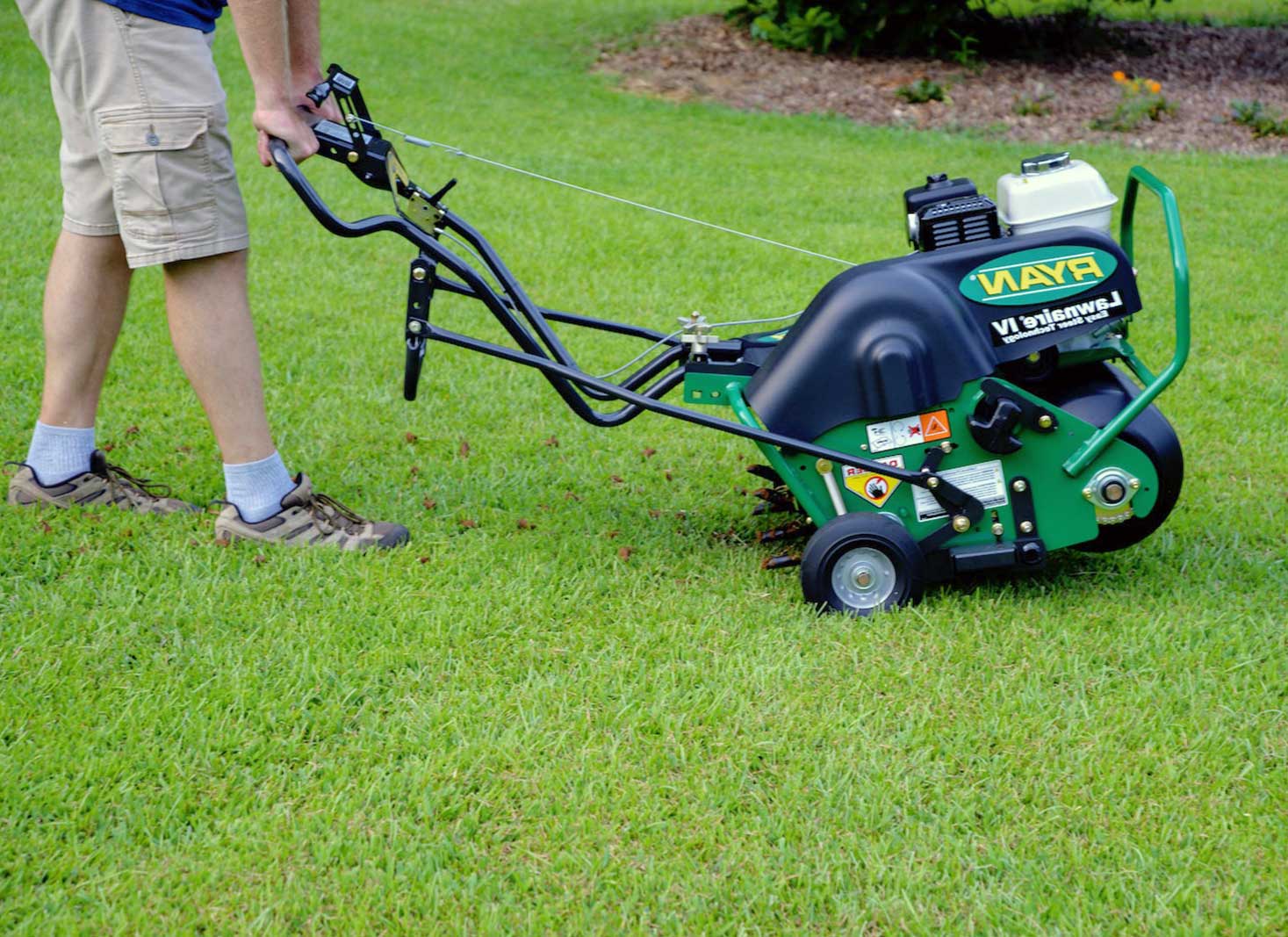
Factors to Consider
When choosing an aeration method, it is imperative to consider factors such as the type of soil, desired outcome, cost, size of the area to be aerated, and type of vegetation present.
Different types of soil may necessitate different aeration methods, and understanding your lawn’s specific requirements is key to achieving a healthy and thriving outdoor space.
The desired result when selecting an aeration method should be to enhance the well-being of the soil and the general health of the lawn.
Budget, time constraints, and the size of the area to be aerated will also influence your decision, as well as the type of vegetation present on your lawn.
Aeration Services and DIY Options
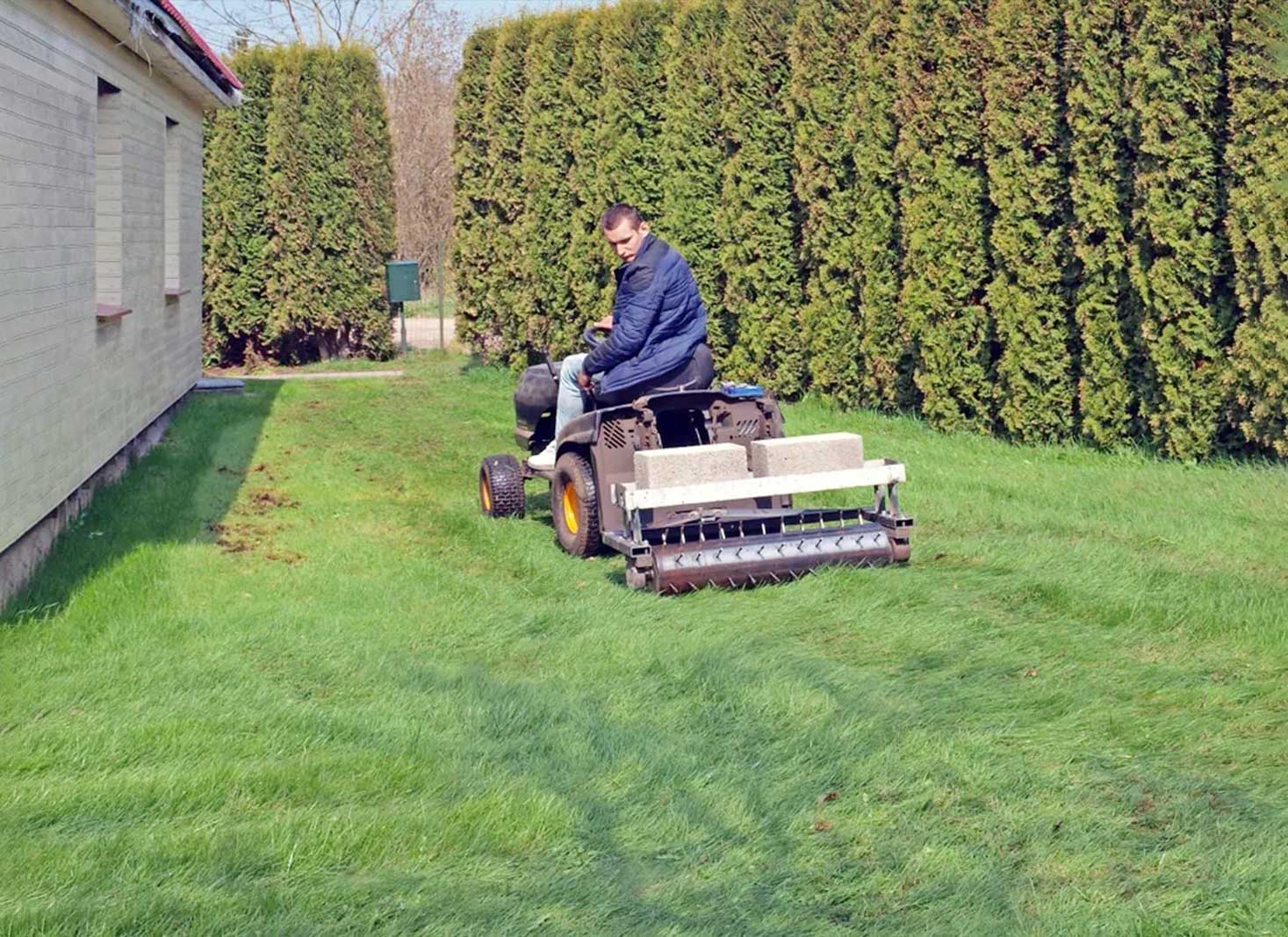
Hiring a professional for aeration services is recommended for the best results, as they possess the necessary equipment, expertise, and knowledge to complete the task efficiently.
On the other hand, DIY aeration is possible with the right equipment and knowledge, but may not yield the same level of results as a professional service.
Hiring a Professional
Hiring a professional for aeration services has numerous benefits, including access to dependable professional equipment, the appropriate aeration mix in the necessary quantity, and ample expertise.
Professionals will be available post-engagement to address inquiries and facilitate the attainment of a healthier lawn and lusher grass without exorbitant errors.
Additionally, hiring a professional can save you time and effort, ensuring that your lawn is in better condition and more robust.
While the cost of hiring a professional for aeration services may be higher than undertaking a DIY approach, the benefits of a healthier, more vibrant lawn often outweigh the expense.
DIY Aeration
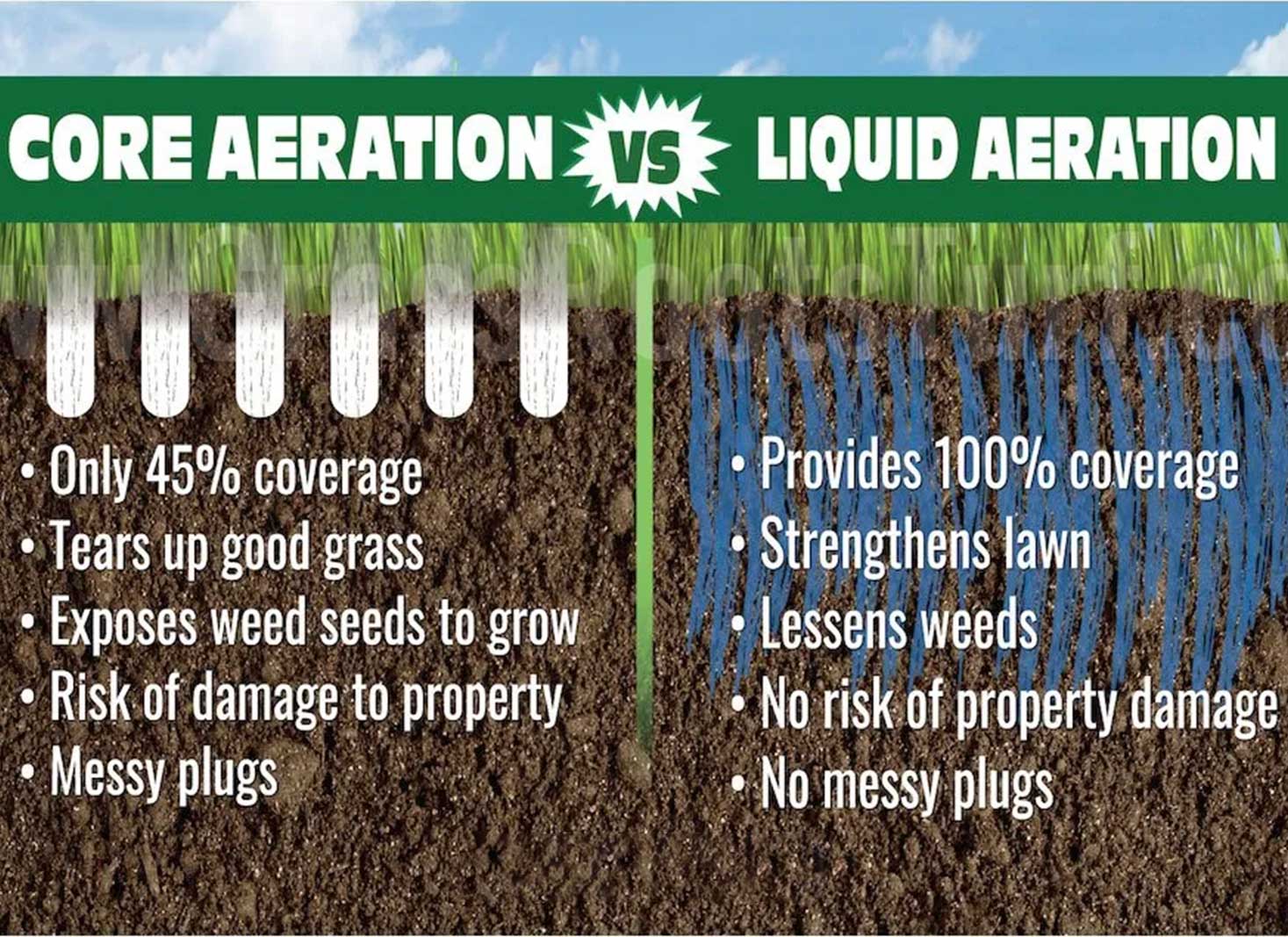
For those who prefer a more hands-on approach, DIY aeration is a viable option, albeit with some challenges.
To properly aerate your lawn yourself, you’ll need the necessary tools and materials, such as a garden fork, a spade, a lawn aerator, and a lawn aerator attachment.
Although DIY aeration can be cost-efficient if the requisite tools are already available, it may take multiple attempts to achieve the desired results if you are inexperienced in aerating or lawn care.
Consequently, it is important to consider all aspects of the task before initiating it, as it may involve additional expenditure and utilize valuable time.
FAQ's
Liquid aeration is a highly effective technique for increasing the porosity of soil and improving root absorption. Its main advantages include a quick response time, better results, and no need to clean up after aeration.
Furthermore, it’s less intrusive than manual aeration, making it an ideal choice for homeowners looking for a simpler solution to their lawn’s soil compaction problem.
Liquid aeration can be expensive and may not work as effectively as traditional aeration, making it a less reliable option for soil aeration.
It is also difficult to achieve the desired results with liquid aeration since it involves applying a certain amount of product over a specific area, leaving little room for error.
Moreover, liquid aeration may disturb beneficial organisms in the soil.
Based on the evidence, it appears that liquid aeration is potentially more effective than mechanical aeration for deeper penetration.
Liquid aeration has the advantage of being able to penetrate far deeper into the soil than traditional mechanical core aeration, providing greater benefits for lawns and garden beds.
Thus, liquid aeration can be considered a better option compared to mechanical aeration.
It can be concluded that liquid aeration is an effective method for helping to reduce compaction in soil and creating better oxygen flow to a lawn’s root system.
It also works to break down the layer of thatch on the surface of grass, allowing the roots to breathe better.
However, there are still benefits to manual methods of aeration, making it important to use both techniques as part of a comprehensive lawn care plan.
